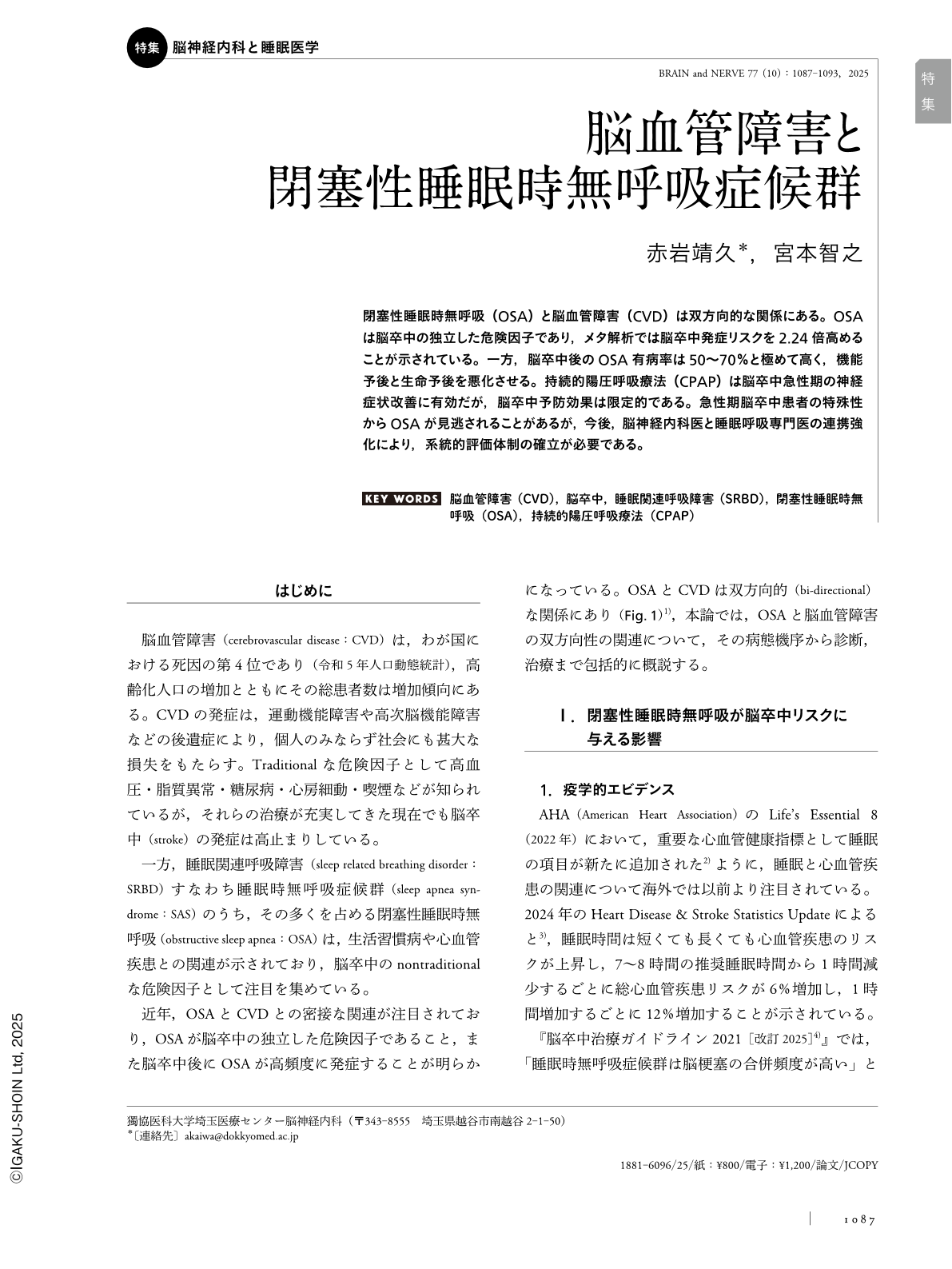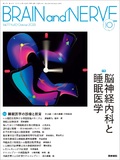Japanese
English
- 有料閲覧
- Abstract 文献概要
- 1ページ目 Look Inside
- 参考文献 Reference
閉塞性睡眠時無呼吸(OSA)と脳血管障害(CVD)は双方向的な関係にある。OSAは脳卒中の独立した危険因子であり,メタ解析では脳卒中発症リスクを2.24倍高めることが示されている。一方,脳卒中後のOSA有病率は50〜70%と極めて高く,機能予後と生命予後を悪化させる。持続的陽圧呼吸療法(CPAP)は脳卒中急性期の神経症状改善に有効だが,脳卒中予防効果は限定的である。急性期脳卒中患者の特殊性からOSAが見逃されることがあるが,今後,脳神経内科医と睡眠呼吸専門医の連携強化により,系統的評価体制の確立が必要である。
Abstract
Obstructive sleep apnea (OSA) and cerebrovascular disease (CVD) have a bidirectional relationship. OSA serves as an independent risk factor for stroke, and a prior meta-analysis has demonstrated a 2.24-fold increased risk for stroke development. Conversely, the prevalence of OSA after stroke is remarkably high (50-70%, significantly impairing both functional and survival outcomes). Continuous positive airway pressure (CPAP) therapy is effective in improving neurological symptoms during the acute phase of stroke, although evidence for stroke prevention remains limited. However, OSA is often overlooked in patients with acute stroke because of specific challenges that include impaired consciousness, cognitive dysfunction, positioning limitations, and medical device constraints that complicate evaluation procedures. Current clinical practice faces several barriers to OSA assessment that include limited access to sleep-testing facilities and specialists, unclear timing for post-stroke evaluation, insufficient awareness among healthcare providers regarding sleep disorders, and inadequate evidence levels for treatment interventions. Future directions require a strengthened collaboration between neurologists and sleep medicine specialists to establish systematic OSA evaluation systems in the acute stroke phase. This comprehensive multidisciplinary approach, which involves not only physicians, but also nurses, therapists, pharmacists, and nutritionists, is essential for improving the quality of life and prognosis of patients with stroke with concurrent sleep-disordered breathing.

Copyright © 2025, Igaku-Shoin Ltd. All rights reserved.


